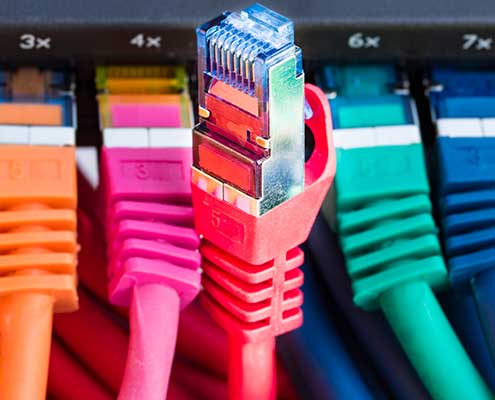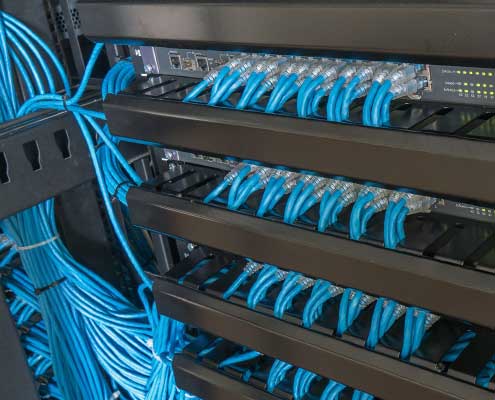Network Cabling Design
Network Cabling Design and Implementation
Network cabling is crucial for any business operating in the digital age, and that’s the majority of businesses in the 21st century. That’s why determining the right type of cabling and equipment for your business is critical. After all, network cabling provides the backbone for efficient communication between devices, enables seamless data transfer and effective collaboration. And, with the correct network cabling in place, you can ensure that your productivity and competitiveness remains high.
What are the Different Types of Network Cabling?
There are three main types of network cabling found within businesses:
- Twisted pair: these cables, most commonly found in telecommunications, use twisted copper cores to minimize signal degradation. One core transmits data while the other acts as a grounding wire. Typically, a Cat 6 cable can carry data over 100m without signal degradation. This makes them a suitable solution for most businesses.
- Coaxial: mostly found in older IT infrastructures, coaxial cabling can deliver high bandwidths and carry high-frequency signals. The centre of a coaxial cable consists of a solid wire conductor within an insulator, whilst an outer conductor is used to form a circuit. This cable type is popular in digital telephone networks due to its data-carrying capacity.
- Fiber optic: a much newer technology, fiber optic cable transmits data using light, which is reflected down its centre, through an inner core and outer cladding. Lightweight and capable of transmitting data up to 10km at speeds of 10 gigabits per second, fiber optic cables are extensively used in telecommunications, cable TV and local area networks.
Assessing Network Cabling Needs
Determining the Right Type of Cabling and Equipment for Your Business
Assessing the network cabling needs of a business involves several key steps. Firstly, you need to evaluate the size and layout of your business premises, this allows you to determine the length of cabling required and how your infrastructure will connect different areas of the business together. It’s also important to consider the number of devices – such as computers, printers and servers – which will need network connectivity. Finally, you need to assess the bandwidth requirements not just for your current demand, but also for future increases as your business scales up. Taking all of this into account will allow you design and build a network cabling layout which delivers exactly what you need.
Inspecting and Maintaining Your Network Cabling
For optimal performance, inspecting and maintaining your network cabling infrastructure is vital. Regular inspections should include checking for physical damage, loose connections and proper cable management. Conducting cable tests to measure signal strength and continuity will also help you to identify any issues. Therefore, implementing a structured maintenance schedule for cleaning, re-terminating and replacing damaged cables is essential if you want to preserve your network’s performance.
Who can install Data Cabling?
Although data cables use electricity and it’s possible for an electrician to install them, for guaranteed performance and service quality, it’s advisable to engage a network specialist directly. A properly installed data cabling system should offer long term reliability. However, the potential for issues still exists. Hence, it’s wise to verify that your data cables include a warranty, providing added assurance against unforeseen problems.
Read more about who can install data cabling.
Your Network Cabling Plan
Whether you are looking to install a brand new network cabling infrastructure or simply need to carry out a maintenance check, you should always work with professional cable technicians. Thanks to their expertise, you can be assured of a cabling infrastructure which performs to the highest standards required for your business and peace of mind that it’s installed and maintained safely.
Read more about Data Cabling here..
For additional electrical articles please visit our main BLOG page here





